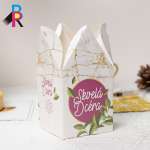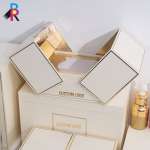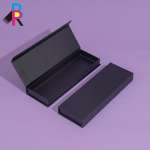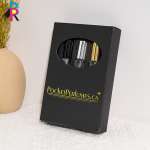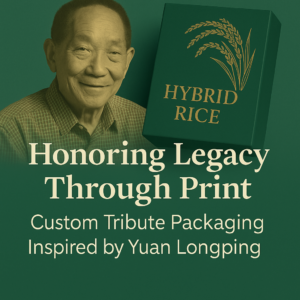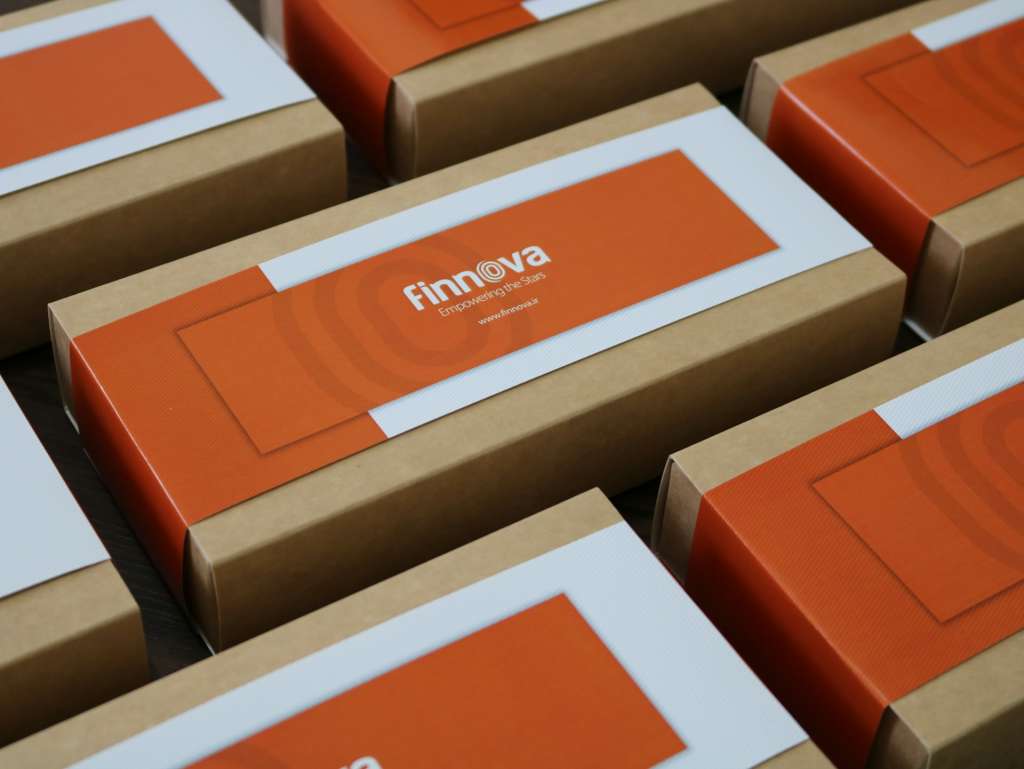
When it comes to branding and marketing, packaging plays a crucial role in capturing the attention of consumers and standing out in a crowded marketplace. Custom packaging allows businesses to create a memorable and unique brand experience for their customers, helping to differentiate their products from competitors. By designing packaging that reflects your brand’s identity and values, you can establish a strong visual presence that resonates with your target audience.
In addition to enhancing your brand’s visibility, custom packaging also offers a range of practical benefits. Custom packaging can help protect your products during shipping and storage, reducing the risk of damage and ensuring a positive customer experience. Furthermore, custom packaging can be designed to fit the specific size and shape of your products, minimizing waste and optimizing space efficiency. Overall, investing in custom packaging is a strategic decision that can have a significant impact on your brand’s success in the market.
Understanding Your Brand Identity
Defining your brand values is the first step in creating your own packaging. Take some time to think about what your brand stands for and the message you want to convey to your customers. Are you focused on sustainability, innovation, luxury, affordability, or something else entirely? Your brand values will help guide your packaging decisions and ensure that they align with the overall image you want to project.
Identifying your target audience is also crucial in the packaging design process. Knowing who your customers are, what they care about, and how they like to interact with brands will help you create packaging that resonates with them. Consider factors such as age, gender, interests, and spending habits when designing your packaging to ensure that it appeals to your target audience.
Researching Packaging Trends
When creating your own packaging, it’s important to stay informed on current packaging trends in order to create a design that resonates with consumers. Take note of popular trends such as eco-friendly packaging, minimalist designs, and vibrant colors. By analyzing successful packaging designs, you can draw inspiration for your own creation and tailor it to the preferences of your target audience. Pay attention to the use of typography, imagery, and branding elements in these designs to understand what makes them effective and visually appealing. Incorporating elements from successful packaging designs into your own can help your product stand out on the shelf and attract customers.
Choosing the Right Materials
When it comes to choosing the right materials for your packaging, two key considerations are eco-friendly options and the impact of materials on brand perception.
First and foremost, opt for eco-friendly materials such as recycled paper, biodegradable plastics, or renewable plant-based materials. Not only will these choices benefit the environment by reducing waste and carbon emissions, but they can also appeal to eco-conscious consumers who prioritize sustainability.
Additionally, the materials you select for your packaging can have a significant impact on how your brand is perceived. For instance, luxury brands may opt for sleek, high-quality materials like matte cardboard or embossed foils to convey a sense of sophistication and exclusivity. On the other hand, a more laid-back and eco-friendly brand may opt for minimalistic packaging made from recycled materials to align with their brand values.
Ultimately, choosing the right materials for your packaging is not just a practical decision but a strategic one that can shape how your brand is perceived by consumers. By prioritizing eco-friendly options and considering how materials reflect your brand identity, you can create packaging that not only stands out but also resonates with your target audience.
Creating a Mood Board
To create your own packaging, you first need to gather inspiration from various sources such as magazines, websites, and even nature. Once you have a collection of images, colors, and textures, you can start establishing a cohesive theme that will guide the design process. A mood board is a great way to visually organize your ideas and ensure that your packaging conveys the desired message and aesthetic.
Designing Your Packaging
When you are designing your packaging, it is important to consider key elements such as your logo and brand elements, the color scheme and typography choices you make, as well as incorporating storytelling elements. Your logo and brand elements should be prominently displayed on the packaging to establish brand recognition. Choosing a cohesive color scheme and typography can help with brand consistency and create a visually appealing package. Incorporating storytelling elements can help create a connection with your customers and make your packaging more memorable.
Customizing the Shape and Size
When customizing the shape and size of your packaging, there are several practical considerations to keep in mind. The shape and size of your packaging should be practical for both storage and shipping purposes. Additionally, it should be easy for consumers to handle and open.
In order to stand out on the shelf, consider unique shapes and sizes that will catch the eye of consumers. Think about how your packaging can differentiate your product from competitors and attract attention in a crowded retail environment. Consider using unconventional shapes or sizes to make your product memorable and stand out from the competition.
Adding Unique Finishing Touches
Embossing, debossing, and foiling can add a touch of elegance and luxury to your packaging design. These techniques can elevate your packaging and make it stand out from the competition.
Texture and special coatings can also enhance the look and feel of your packaging. By using different textures and coatings, you can create a tactile experience that engages your customers and leaves a lasting impression.
Testing and Prototyping
Testing and prototyping are crucial steps in the packaging design process. Without proper testing, you may encounter issues with functionality, durability, and overall effectiveness of your packaging design. By conducting thorough testing, you can identify any flaws or areas for improvement before mass production.
Budget-friendly prototyping options are available for those looking to create their own packaging. From DIY options using materials like cardboard and paper to low-cost prototyping services, there are plenty of ways to test your design without breaking the bank. Investing time and resources in testing and prototyping will ultimately save you money in the long run by ensuring your packaging meets your needs and the needs of your customers.
Finding the Right Printing Partner
When it comes to creating your own packaging, one of the most important decisions you will make is choosing the right printing partner. There are both local and online printing services available, each with their own pros and cons.
Local printing services offer the advantage of face-to-face communication and the ability to see samples in person. They also allow for quicker turnaround times and the opportunity to support small businesses in your community. On the other hand, online printing services often have lower prices and a wider range of customization options.
When choosing a printer, it’s important to ask the right questions to ensure they can meet your specific needs. Some important questions to consider include: What is their level of experience with packaging design? What printing technologies do they use? Can they provide samples of previous work? How long will the turnaround time be for your order? By asking these questions and carefully evaluating your options, you can find the right printing partner to bring your packaging vision to life.
Labeling and Regulations
When creating your own packaging, it is crucial to understand the legal requirements that must be met. Failure to comply with labeling regulations can result in fines or even product recalls. Here are some essential tips for creating compliant packaging design:
- Include all necessary information: Make sure to include required elements such as the product name, net weight or volume, ingredients list, nutritional information, and any allergen warnings. Missing or inaccurate information can lead to legal issues.
- Use clear and legible fonts: Ensure that all text on your packaging is easily readable. Avoid using overly decorative fonts that may be difficult to decipher, especially for important information like ingredients or safety warnings.
- Follow FDA guidelines: If you are selling food or beverage products, familiarize yourself with the Food and Drug Administration’s guidelines for labeling. This includes requirements for nutrition facts panels, ingredient lists, and health claims.
- Be mindful of language requirements: If your product will be sold in multiple countries, be aware of any language requirements for labeling. In some cases, multiple languages may be required to ensure compliance with local regulations.
By following these tips and staying informed about legal requirements for packaging, you can create attractive and compliant packaging design for your products.
Packaging for E-commerce
When creating packaging for e-commerce, it is important to consider the unique challenges of shipping products to customers. Choose durable materials that can withstand the rigors of transportation and protect your items from damage. Additionally, think about the unboxing experience for online customers. Consider incorporating features such as easy opening mechanisms, branded tissue paper, or personalized thank you notes to make the process special for your customers. A memorable unboxing experience can lead to repeat purchases and positive reviews.
How Do You Make Unique Packaging?
When creating your own packaging, it is important to think outside the box. Consider unique shapes, materials, and design elements that will make your product stand out. Additionally, personalizing the unboxing experience can leave a lasting impression on customers. Adding customized touches like handwritten notes, special inserts, or branded packaging can make the process of receiving and opening your product truly special for the consumer. By making your packaging both unique and personalized, you can enhance the overall customer experience and build brand loyalty.
Sustainability in Packaging
When creating your own packaging, it is important to consider eco-friendly alternatives that promote sustainability. By opting for materials such as recycled paper, biodegradable plastics, or compostable packaging, you can minimize the environmental impact of your packaging design. Additionally, communicating your commitment to sustainability through labels, tags, or online messaging can help customers understand and appreciate your efforts to minimize waste and support a greener future.
Launching Your Custom Packaging
Now that you have created your own custom packaging, it’s time to focus on launching and promoting your new design. Here are some key steps to consider:
Develop a launch strategy to ensure your packaging design is presented to your target audience effectively. This may include social media campaigns, email marketing, influencer partnerships, or even traditional advertising.
Monitor and optimize your packaging design to gather feedback from customers and make improvements as needed. Pay attention to customer reviews, sales data, and any other relevant metrics to ensure your packaging design is meeting your goals.
By following these steps, you can successfully launch and promote your custom packaging design to attract and engage customers effectively. Good luck with your packaging journey!
Start your packaging journey with Bonroy.Get in touch with our custom packaging experts today!
source:unsplash wikipedia

